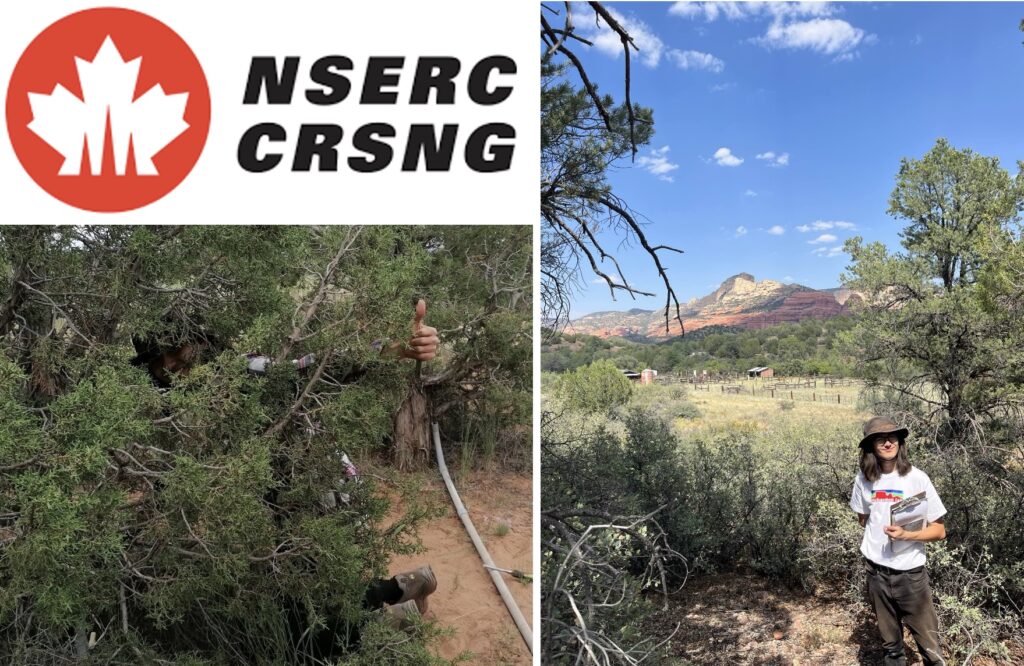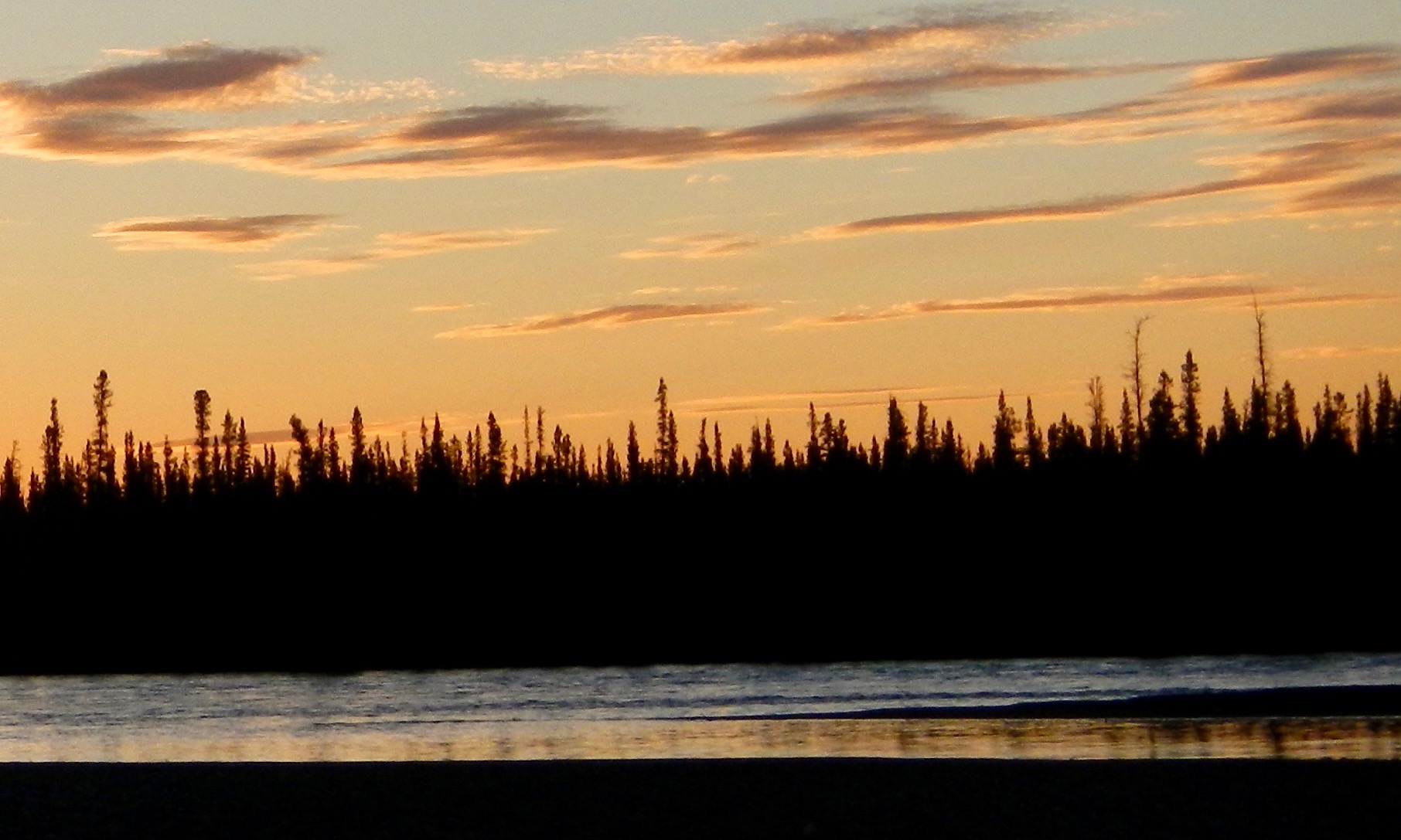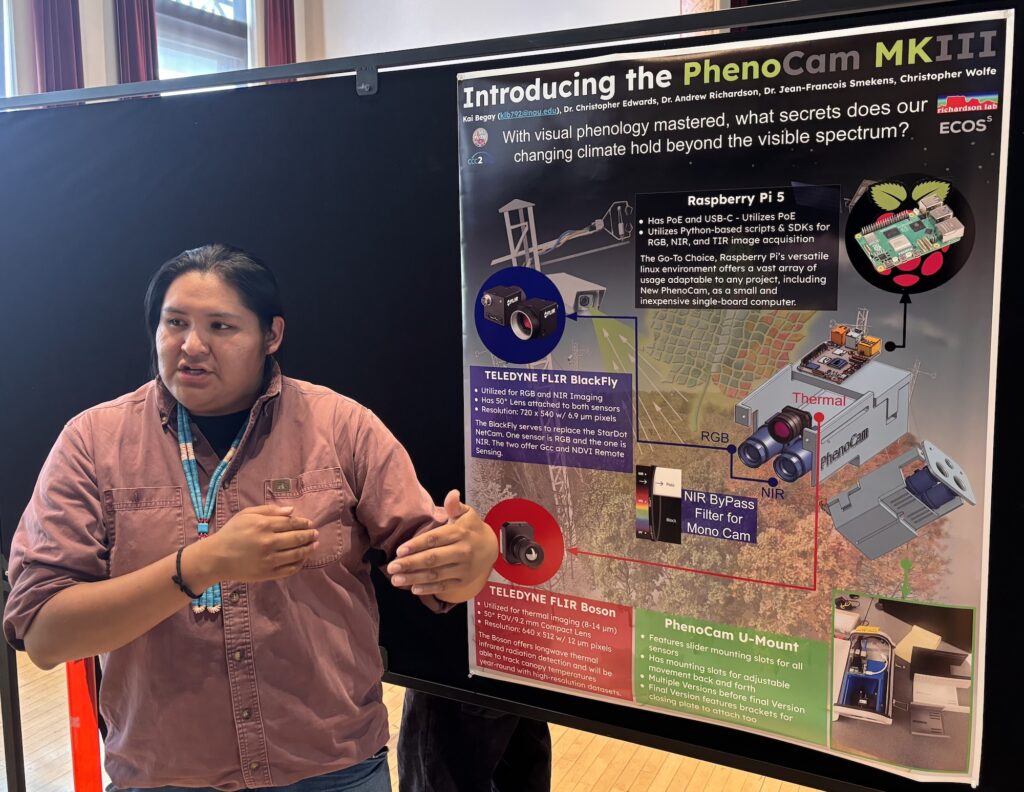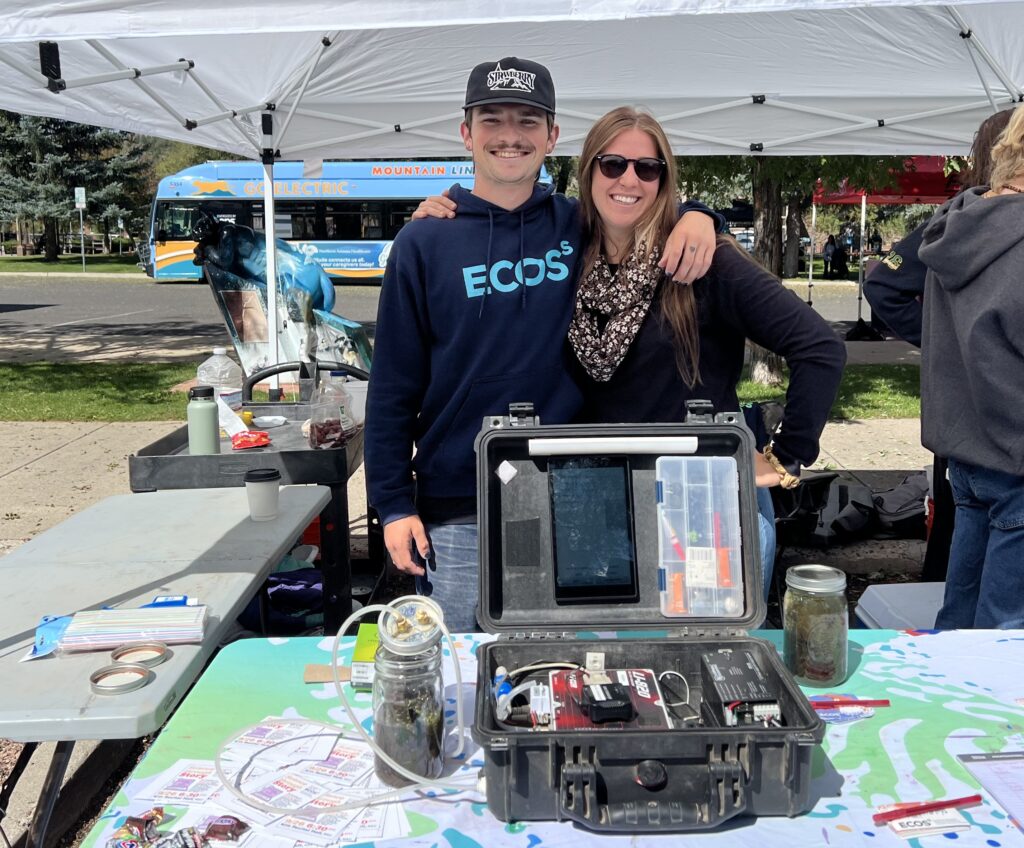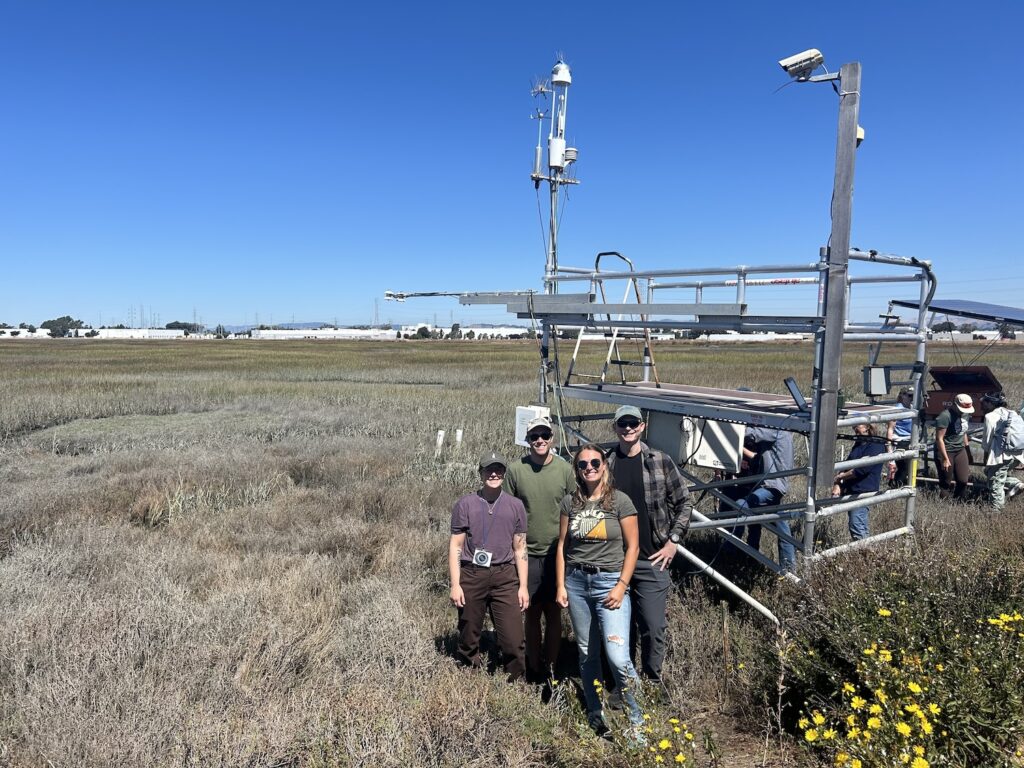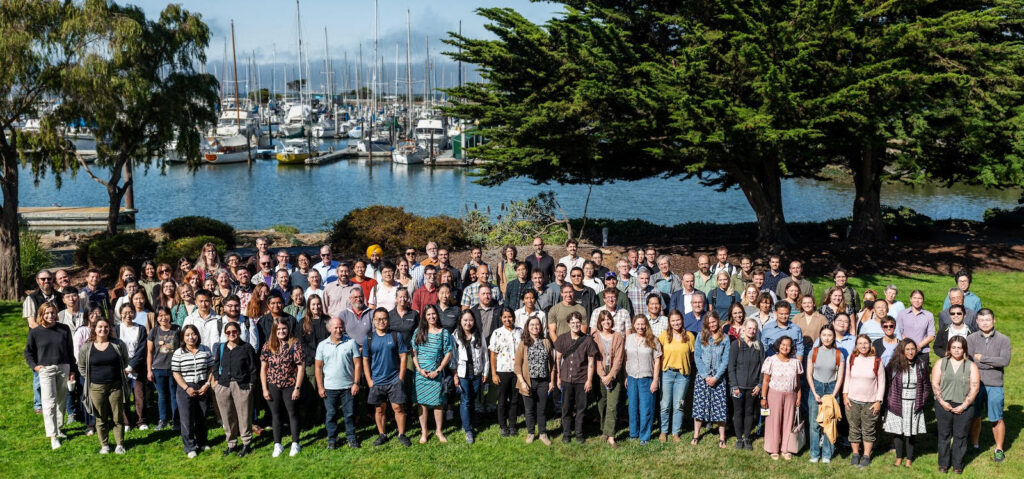Oscar has been awarded a NSERC (Natural Sciences and Engineering Research Council of Canada) Postgraduate Scholarship by the Government of Canada. The title of his funded proposal is “Tracking the seasonality of photosynthesis in a widespread arid conifer woodland using canopy colour,” and careful readers will note his Canadian spelling of the final word.
Oscar’s NSERC fellowship, the Canadian equivalent of the highly-competitive NSF GRFP for U.S. citizens, will provide support for the next 3 years as he conducts research on growing season length and timing in pinyon-juniper ecosystems using field measurements in Arizona and Utah, in addition to PhenoCam data from a number of sites across the Southwest.
Congratulations to Oscar on being selected for this great honor!
The photograph on the left shows Oscar dodging the paparazzi (or, more accurately, hiding behind a juniper) after his award was publicly announced last week, and the photograph on the right shows Oscar in the field at the Bradshaw Ranch SEGA site near Sedona (a location commonly described as a “paranormal hotspot”; EMF-detecting gear not shown to protect the integrity of the researcher).
